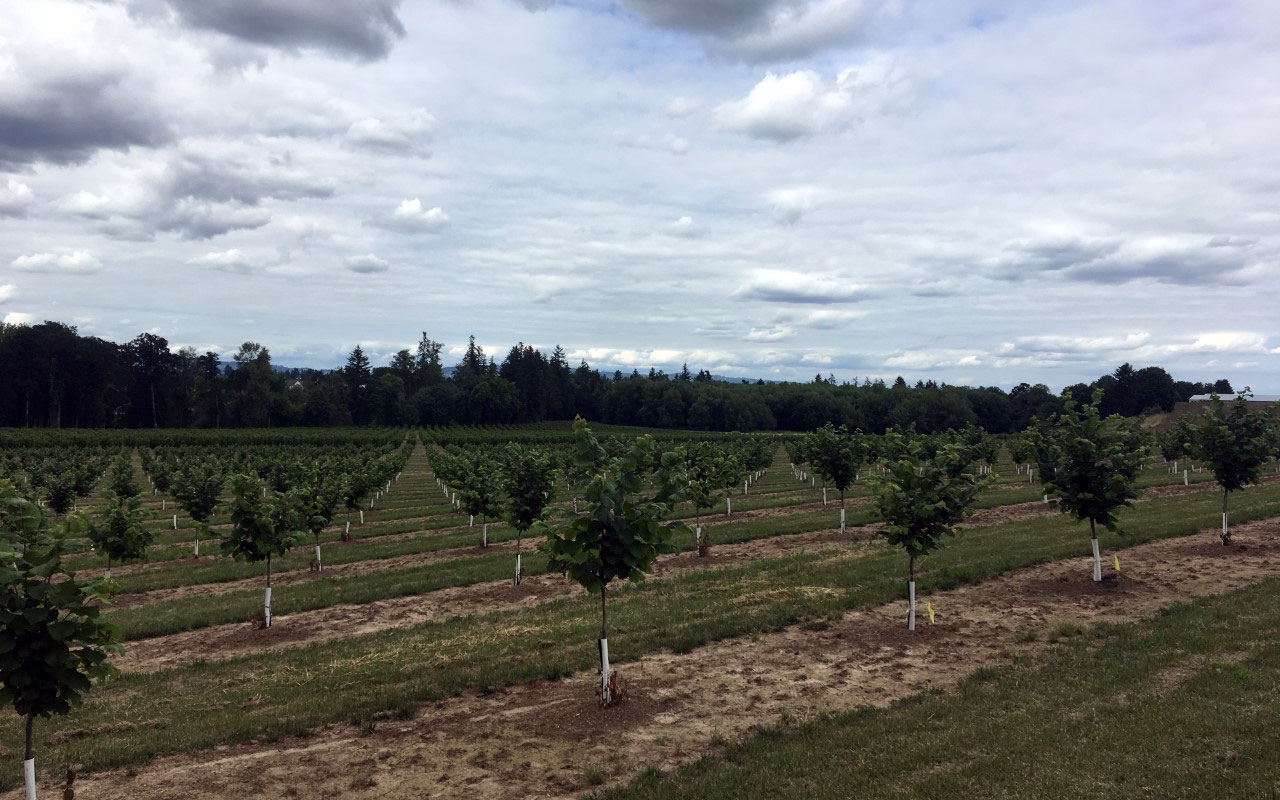Seasonal hazelnut pruning strategies, said Oregon State University’s Nik Wiman, depend on the age of the trees, orchard design and variety susceptibility to Eastern Filbert Blight (EFB).
Growers typically will begin their orchard pruning operations after trees enter dormancy in the fall, but given the inevitable fall and winter rainfall, they will get into the orchards when they can, Wiman said. No optimal time for pruning trees has been determined by research. Choosing a time when no rain is forecast for several days will help prevent infections from pruning wounds.
Training and pruning young trees during the first two years after planting is different than pruning mature orchard.
The goal with young trees is to develop a strong system of major scaffold limbs to be the tree’s framework. During the first dormant season, three to five major branches should be selected to become the scaffold branches. These should be evenly spaced in different directions and have some vertical space between them. All other limbs should be removed. The scaffold branches should be headed at 32-36 inches to stimulate lateral branches. There is a risk with directing growth to become higher as the shallow rooted trees can be more easily blown over.
Little pruning is needed, other than directing growth that could interfere with orchard equipment movement, after the second dormant season. Heavy pruning can delay bearing by promoting excessive shoot growth. It can also cause suckers that can crowd the center of the tree and shade other limbs.
In the increasingly popular double density orchards, Wiman said trees are planted for earlier high yields and then when they reach maturity, every other tree is removed. In those cases, he said that the temporary trees are often mechanically hedged back to allow the permanent trees to occupy the space instead of letting them grow together. That allows the permanent trees to develop well-shaped canopies.
As hazelnut trees age, Wiman said there is not a lot of annual pruning done. Hazelnut trees are long lived but production can plateau over time as the canopies become too thick for light penetration in lower branches. In those cases, pruning can help open up the canopies. The other reason for pruning mature trees is to stimulate new growth in hazelnut varieties that are susceptible to Eastern Filbert Blight where infected wood has been removed.
Oregon State University recommendation for production pruning is a five-year rotation with one fifth of the orchard pruned each year. Research has shown that hazelnut yields are reduced the first year after heavy pruning, but they increase in the second and later years. Cutting 50 percent of the bearing surface from 20 percent of the trees each year involves less time than reducing all of the trees in the orchard by five to eight percent annually.
Wiman said growers also use rotational mechanical pruning, cutting back one side of the tree one year and the other side on the next year.

Cecilia Parsons
Cecilia Parsons has lived in the Central Valley community of Ducor since 1976, covering agriculture for numerous agricultural publications over the years. She has found and nurtured many wonderful and helpful contacts in the ag community, including the UCCE advisors, allowing for news coverage that focuses on the basics of food production.
She is always on the search for new ag topics that can help growers and processors in the San Joaquin Valley improve their bottom line.
In her free time, Cecilia rides her horse, Holly in ranch versatility shows and raises registered Shetland sheep which she exhibits at county and state fairs during the summer.
















